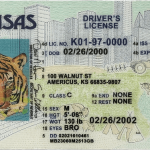In the digital – age landscape of online marketplaces, the issue of fake IDs poses a significant threat to the integrity of seller verification processes. As we look towards 2025, the sophistication and prevalence of fake IDs are expected to rise, bringing with them a host of risks for online marketplaces.
### The Growing Problem of Fake IDs
Online marketplaces have become a cornerstone of modern commerce, providing a platform for countless sellers to reach a global customer base. However, with this growth comes the challenge of ensuring that all sellers are legitimate. Fake IDs are a major obstacle in this regard. Criminals are constantly devising new ways to create and use counterfeit identification documents to register as sellers on these platforms.
Fake IDs can be used for a variety of illegal or unethical purposes. Some individuals may use them to sell counterfeit goods, which not only undermines the intellectual property rights of legitimate brands but also cheats customers who may unknowingly purchase sub – standard products. Others might use fake IDs to engage in money – laundering activities through the online marketplace, by creating fake sales transactions and moving illicit funds.
### Risks to Online Marketplaces
#### Reputational Risk
One of the most significant risks that online marketplaces face due to fake IDs is reputational damage. When customers encounter fake products sold by sellers who used fake IDs to register, they lose trust in the platform. Negative reviews and word – of – mouth can spread quickly, discouraging potential customers from using the marketplace. This loss of trust can have long – term consequences for the marketplace’s bottom line, as fewer customers mean lower sales and revenue.
#### Legal Risk
Online marketplaces are also exposed to legal risks when fake IDs are used in seller verification. Regulatory bodies expect marketplaces to have robust identity verification procedures in place. Failure to do so can result in fines and legal action. For example, if a seller using a fake ID engages in illegal activities such as selling drugs or weapons through the marketplace, the platform may be held liable for not properly vetting the seller.
#### Financial Risk
There are financial implications as well. Fake sellers can cause financial losses in several ways. They may engage in charge – back fraud, where they receive payment for goods but never deliver them, forcing the marketplace to refund the customer. Additionally, dealing with the fallout of fake IDs, such as investigating fraud cases and compensating affected parties, incurs significant costs for the marketplace.
### The Role of Seller Verification
Seller verification is the first line of defense for online marketplaces against the threat of fake IDs. A comprehensive verification process typically involves checking government – issued identification documents, such as passports or driver’s licenses, and cross – referencing them with other databases. However, as fake IDs become more sophisticated, traditional verification methods are becoming less effective.
In 2025, we can expect fake IDs to be more difficult to detect. Advanced printing technologies and access to personal information on the dark web are making it easier for criminals to create high – quality counterfeit documents. Marketplaces need to adapt their verification processes to keep up with these evolving threats.
### Technological Solutions for Seller Verification
#### Biometric Verification
Biometric verification, such as fingerprint or facial recognition, is emerging as a more reliable method of seller verification. These technologies are based on unique physical characteristics of an individual, making it extremely difficult for fraudsters to replicate. For example, when a seller registers on an online marketplace, they can be required to provide a fingerprint scan or a facial image. The marketplace can then compare this biometric data with government – held records to ensure authenticity.
#### Blockchain – Based Verification
Blockchain technology also holds promise for seller verification. It provides a decentralized and immutable ledger that can be used to store and verify identity information. Sellers can create a digital identity on the blockchain, and marketplaces can access this information for verification purposes. Since blockchain is highly secure and resistant to tampering, it can help prevent fake IDs from being used in the verification process.
#### Artificial Intelligence and Machine Learning
Artificial intelligence (AI) and machine learning (ML) can be used to analyze large amounts of data related to seller verification. These technologies can detect patterns and anomalies in identification documents and seller behavior. For example, an AI – powered system can analyze the quality of a scanned ID document, looking for signs of forgery such as inconsistent font styles or abnormal color gradients. ML algorithms can also learn from past fraud cases to improve the accuracy of future verification processes.
### Common Problems and Solutions
#### Problem 1: Difficulty in Verifying International IDs
– **Description**: Online marketplaces often have sellers from all over the world. Verifying international IDs can be challenging as different countries have different identification document formats and security features. Some countries may not have centralized databases that can be easily accessed for verification purposes.
– **Solution**: Marketplaces can partner with international identity verification services. These services specialize in verifying IDs from different countries and have access to a wide range of databases. Additionally, they can provide expertise in understanding the unique security features of various international IDs. Another solution is to use a combination of manual and automated verification. For example, an automated system can perform an initial check on the ID’s format and basic information, while a human reviewer can then analyze any疑点 based on their knowledge of international ID standards.
#### Problem 2: Privacy Concerns in Biometric Verification
– **Description**: Some sellers may be reluctant to provide biometric data for verification due to privacy concerns. They may worry about how their biometric information will be stored and used by the marketplace. There is also a risk of biometric data being hacked, which could have serious consequences for the individual’s privacy and security.
– **Solution**: Marketplaces need to be transparent about their biometric data handling practices. They should clearly communicate to sellers how the data will be stored (e.g., encrypted and in a secure database), who will have access to it (only authorized personnel for verification purposes), and for how long it will be retained. Additionally, marketplaces can offer alternative verification methods for those who are uncomfortable with biometric verification, such as multi – factor authentication using non – biometric factors like passwords and one – time passcodes.
#### Problem 3: False Positives in AI – Based Verification
– **Description**: AI – based verification systems may sometimes flag legitimate IDs as fake, resulting in false positives. This can cause inconvenience to sellers, who may have to go through additional verification steps or wait for their accounts to be approved. False positives can also lead to a loss of potential sellers if they become frustrated with the verification process.
– **Solution**: Marketplaces need to continuously train and refine their AI models using a large and diverse dataset of both real and fake IDs. This will help the models become more accurate in distinguishing between genuine and counterfeit documents. Additionally, they should have a human – in – the – loop review process for cases flagged as potential fraud. A human reviewer can use their judgment and experience to determine whether a flagged ID is truly fake or if it is a false positive.
#### Problem 4: High Cost of Advanced Verification Technologies
– **Description**: Implementing advanced verification technologies such as biometric verification, blockchain – based verification, and AI – powered systems can be expensive for online marketplaces. Smaller marketplaces may not have the financial resources to invest in these technologies, which can put them at a disadvantage in terms of fraud prevention.
– **Solution**: Marketplaces can consider cost – sharing models. For example, they can partner with other marketplaces or industry associations to jointly invest in verification technologies. Another option is to start with a phased implementation of these technologies. They can first focus on high – risk areas or seller categories and gradually expand the use of advanced verification methods as their financial situation allows. Additionally, they can look for open – source or low – cost alternatives to some of the technologies, such as open – source AI libraries that can be customized for ID verification purposes.
#### Problem 5: Evasion of Verification by Sophisticated Fraudsters
– **Description**: Sophisticated fraudsters are constantly looking for ways to bypass seller verification processes. They may use techniques such as stealing legitimate identity information and creating fake documents that are very difficult to detect. They may also try to game the verification system by providing false but seemingly valid information.
– **Solution**: Marketplaces need to adopt a multi – layer approach to verification. In addition to traditional ID – based verification, they can use behavioral analytics to monitor seller behavior. For example, if a seller’s transaction patterns are inconsistent with what is expected for their claimed business type, it could be a red flag. Marketplaces can also regularly update their verification processes and technologies to stay one step ahead of fraudsters. They should also collaborate with law enforcement agencies to share information about emerging fraud techniques and take action against fraudsters who are using fake IDs on their platforms.
Fake ID Pricing
unit price: $109
| Order Quantity | Price Per Card |
|---|---|
| 2-3 | $89 |
| 4-9 | $69 |
| 10+ | $66 |


